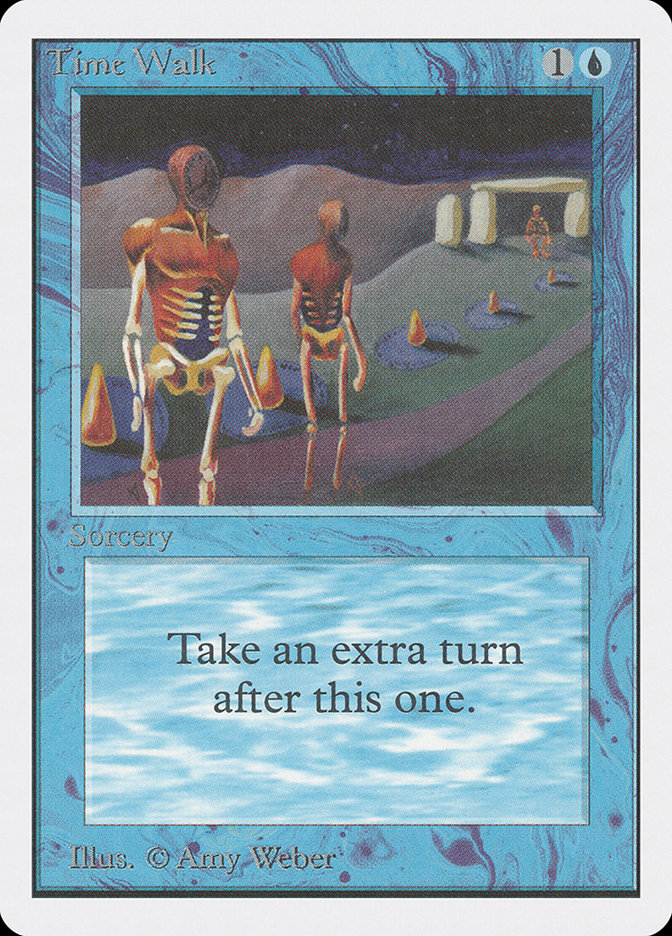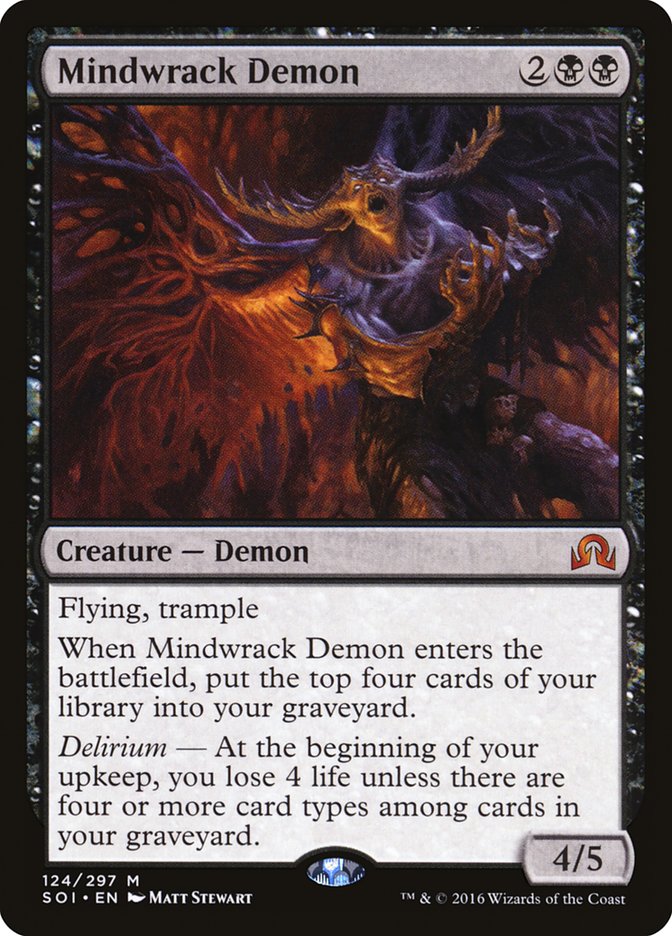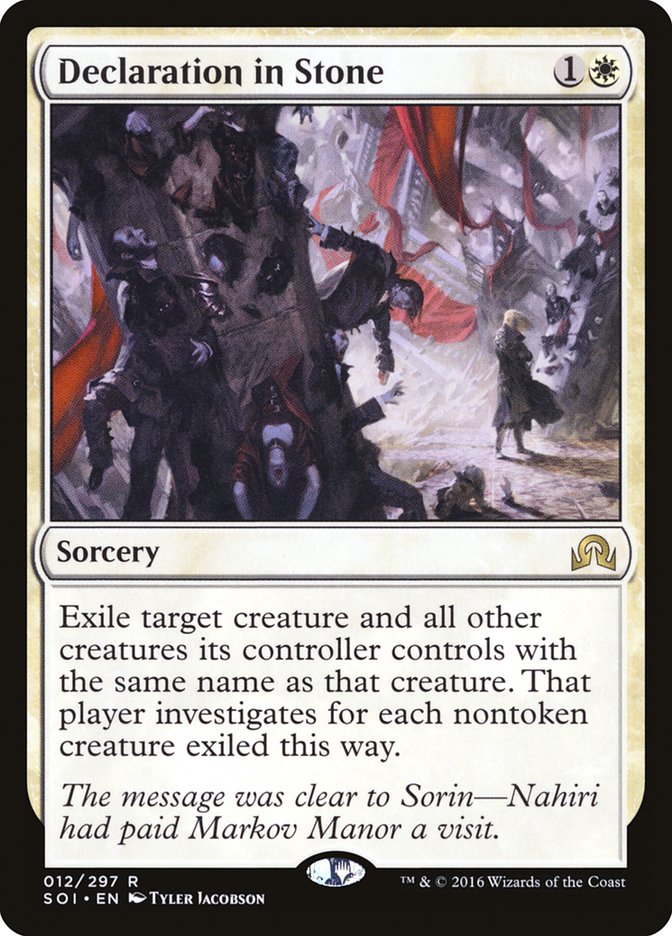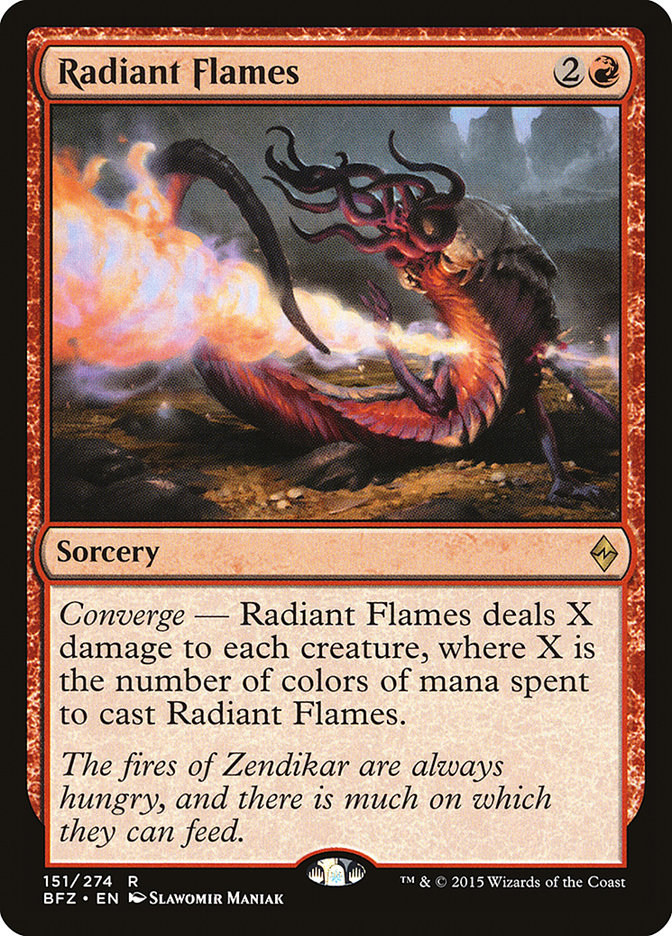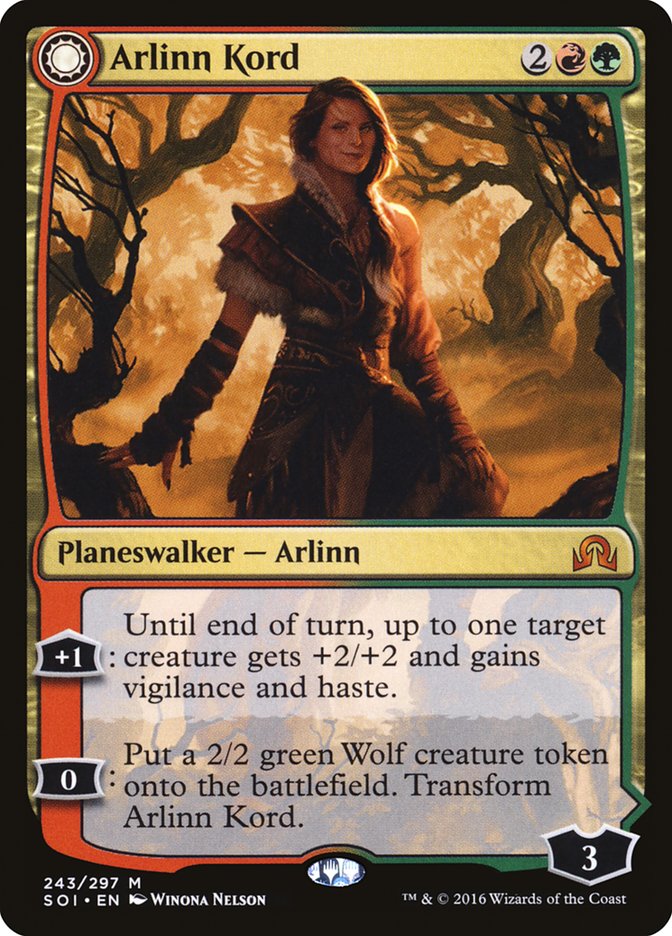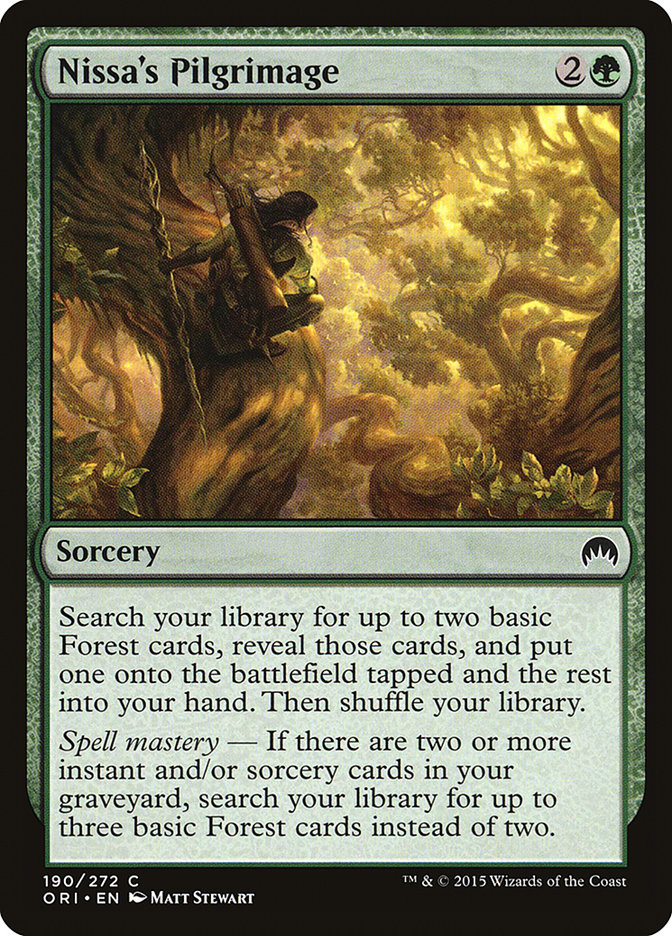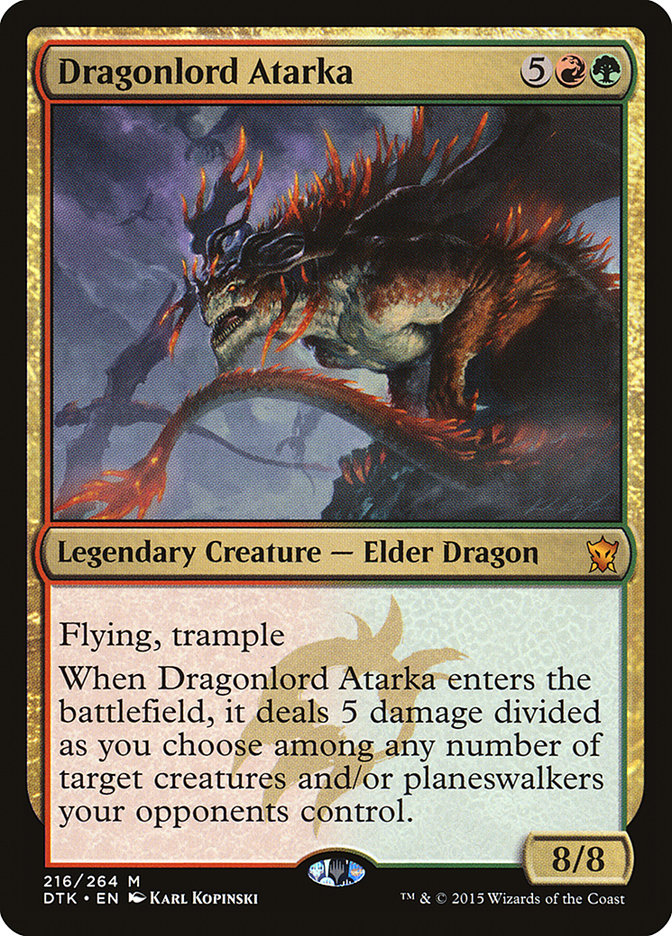The most recent Pro Tour was a very different experience for me. Rather than working with a large established team, I ended up preparing for the event pretty much entirely on my own. I’d spoken briefly with LSV months before about potentially working with CFB again, and he told me they were talking to Ultra Pro about working with them. A combination of a bit of a miscommunication and my focus being elsewhere led to me not following up until a month or so before the Pro Tour, at which point CFB was set with Ultra Pro, and Ultra Pro had already finalized its roster for the event and didn’t want to take on any more members.
While I knew that not working with a team would hurt my chances of doing well at the Pro Tour, I was fine with it. I’d made plans for my wife Natalie to come with me to Madrid, and this gave us an opportunity to treat the trip as a semi-honeymoon, as I’ve been too busy with other events since our wedding in September for us to really take a vacation on our own. If I were working with a team, I’d feel obligated to use pretty much the entire week in Spain prior to the event preparing with them, but testing on my own I could choose how much time to devote to Magic and how much to exploring Madrid.
Testing on my own gave me a bit more insight into the struggle of the average PTQ winner trying to break into the Pro Tour these days. Since most PTQ winners don’t have the chance to work with big teams, their preparation is generally limited to playing with local friends or testing on Magic Online. The latter made up nearly the entirety of my preparation. I did manage to get in one live draft with my product from the Prerelease, though it was with just six players, at least half of whom don’t really play competitively. All of my Constructed practice took place in two-player queues or Leagues on Magic Online.
This presented some challenges, some of which I was certainly aware of going in.
The biggest was timing. New sets don’t release on Magic Online until a week before the Pro Tour, which is a week after they release in the real world, or two full weeks after the Prerelease. This obviously provides a much smaller window to actually use Magic Online as a practice tool for the Pro Tour, especially when you take into account the fact that the first few days of MTGO availability are Prerelease only and there are only Swiss Draft queues. Also, card availability for Constructed is quite scarce immediately after the launch. It is both time-consuming and expensive to find all of the cards you need to assemble a deck right away.
Combine these factors with my travel to Madrid a week before the Pro Tour and I arrived in Spain without having played a game of Standard. I had, however, followed the format intently, studying the results of both the Invitational and Standard Open in Columbus. I was also sharing information with Gerry Thompson, who was a fellow lone wolf for the event, though, given the fact that he played in both the #SCGINVI and the recent SCG Tour® Open and clearly had a better grasp of the format than I did, it was perhaps more accurate to say that I was bouncing ideas off of him to serve as a reality check. He was set on what he was playing, and didn’t really need my input.
During the first leg of our trip in Madrid, Natalie and I were staying in a hotel downtown, and spent our days exploring the city, mostly in terms of its restaurants. Thankfully for my Pro Tour preparation, Natalie readily took to the Spanish ways, and I had the chance to jump on Magic Online for a little while now and then while she was taking an afternoon siesta.
The place I started my testing was exactly what I talked about in my last article, G/B Delirium. I was intrigued by the potential of Mindwrack Demon and Traverse the Ulvenwald, both of which stood out to me as potential all-stars from the new set. My experiments with straight G/B didn’t last very long, however, as my Mindwrack Demons got repeatedly bounced by Reflector Mage and I got run over by Humans that grew too big for my Dead Weights to kill. I went back to look at my lists on Magic Online, but apparently I didn’t even respect them enough to save them for posterity; I’d saved over all of my “GBDelirium” lists with new decks.
I branched out a bit and tried U/R Madness, using Jace, Vryn’s Prodigy to facilitate Fiery Temper and Incorrigible Youths, but the payoff just wasn’t worth it. The Youths got outclassed by one-drops against Humans, which was a bit embarrassing. I shifted away from the Youths and the madness cards and toward Dragons (which I’m sure comes as a surprise to no one), and was briefly playing a deck that looked like this:
Creatures (28)
- 4 Stratus Dancer
- 4 Thunderbreak Regent
- 3 Silumgar Sorcerer
- 4 Icefall Regent
- 2 Whirler Rogue
- 3 Eldrazi Skyspawner
- 4 Dimensional Infiltrator
- 4 Rattlechains
Lands (24)
Spells (8)
Sideboard

The small flier plan was great against midrange decks, and certainly better against Reflector Mage than big dopey creatures, but it matched up poorly against both the more aggressive Humans decks and against many of the cards people were playing to beat them, like Kozilek’s Return. After just a handful of matches, I abandoned U/R and went back to the drawing board.
Looking through SCG results, I found a Naya deck that looked interesting and decided to tinker with something similar. Naya is my true calling, after all.
Creatures (20)
- 1 Dragonlord Atarka
- 4 Den Protector
- 4 Deathmist Raptor
- 2 Nissa, Vastwood Seer
- 4 Sylvan Advocate
- 3 Archangel Avacyn
- 2 Tireless Tracker
Planeswalkers (7)
Lands (25)
Spells (8)

While I liked the deck in theory, and it played many of my favorite cards like Deathmist Raptor, Den Protector, and Dromoka’s Command, it just didn’t play out well for me. It was just too slow to keep up with the aggressive Humans decks,and still struggled with Reflector Mage because so much of its defense was predicated on blocking with creatures. The once-MVP Deathmist Raptor just isn’t the powerhouse that it was before Reflector Mage and Declaration of Stone crashed its party. And while Declaration in Stone and Dromoka’s Command are solid removal spells, they’re best paired with aggression rather than control elements, which led to them operating somewhat awkwardly in many situations here.
I decided to go back to the G/B shell, preserving what I liked and jettisoning what I didn’t. I very briefly flirted with a Dark Petition control shell with Seasons Past, but never quite went as deep as Pantheon. That would’ve been kind of difficult given my limited testing time. My experience against Reflector Mage and Declaration in Stone led to be cutting Mindwrack Demon altogether, and focusing on creatures that have some kind of impact even if they’re removed or bounced right away I decided that I wanted more cheap removal to keep up with Humans, which led to me reworking the manabase to add red.
That led to this deck:
Creatures (17)
- 1 Dragonlord Atarka
- 2 Den Protector
- 2 Nissa, Vastwood Seer
- 3 Goblin Dark-Dwellers
- 4 Sylvan Advocate
- 3 Deathcap Cultivator
- 2 Tireless Tracker
Planeswalkers (5)
Lands (25)
Spells (13)
Sideboard

I liked a lot of what was going on here, but it was just a bit too clunky. Goblin Dark-Dwellers was quite powerful when you had a stocked graveyard and could generate some cool value chains with Traverse the Ulvenwald in the late-game. But trying to play three colors with early plays in black and green and double red spells proved challenging on the manabase, and even with so much spot removal alongside Dark-Dwellers and Den Protectors, I still found myself falling behind against Humans regularly without a great way to catch up.
I eventually decided that I needed to suck it up and play Radiant Flames in my maindeck. That meant cutting Deathcap Cultivator, which was probably a card that ought to have been cut once I moved the deck away from Mindwrack Demon in the first place. That also meant cutting Arlinn Kord, who was powerful but unfortunately too slow much of the time, and definitely too slow without the potential of ramping into her on turn 3.
The shift to Radiant Flames came with it a move away from Goblin Dark-Dwellers, in part because of the mana concerns and in part because the Converge of Radiant Flames doesn’t work with Dark-Dwellers’s ability. That also let me shift from Read the Bones to Painful Truths, which is a much more powerful card in a deck that actually wants a lot of lands like this one.
At the same time, I cut Traverse from the deck, since the Dark-Dwellers were gone and I wanted to streamline the deck a bit. Traverse was decent mana fixing early that could turn into a threat late, but I found that in too many games I wasn’t able to hit delirium early enough and it just served to make me essentially flood out in the middle turns.
The new direction of the deck was pretty much built around Tireless Tracker. I’m convinced Tracker is one of the best cards in the new set, since it’s a self-contained win condition plus card advantage engine all in one. It’s kind of like a Knight of the Reliquary in that way, except it takes a bit longer to get online. With Painful Truths and Tracker continually feeding me resources, I found that I wanted ways to leverage them more effectively, and turned to cards that let me play multiple lands per turn in The Gitrog Monster and Mina and Denn, Wildborn.
These four- and five-cost creatures may seem like strange choices when I’m trying to reduce the impact of Reflector Mage on my deck, but in many cases they at least offer an extra land drop before getting bounced, which can help ramp you up to playing your power cards of Chandra and Dragonlord Atarka. And in games where they stay on the battlefield, both of them can take over by helping to fuel your Trackers and churn through your deck.
Here’s what I played in the Pro Tour:
Creatures (17)
- 2 Dragonlord Atarka
- 3 Nissa, Vastwood Seer
- 4 Sylvan Advocate
- 2 Mina and Denn, Wildborn
- 4 Tireless Tracker
- 2 The Gitrog Monster
Planeswalkers (3)
Lands (26)
Spells (14)

The good news is that I went 5-1 in Draft despite my limited preparation, and in Standard I beat every opponent playing something that I built my deck to beat. The bad news is that I only played against three of them, and I ended up dropping before the last round at 8-7 overall.
My deck performed admirably against Humans, Bant Company, and U/R Goggles, but I lost close matches to two ramp decks, Mono-Red and G/R, and a W/B Eldrazi deck, and got trounced by three different Tokens decks. I really had not expected Tokens to be a major factor at the Pro Tour and certainly wouldn’t have played a deck so reliant on spot removal if I had.
In retrospect, I probably could have shaved a few of my sideboard slots for Virulent Plagues just in case, and would certainly make that change if I were to play the deck moving forward. Given the results of the Pro Tour and Grand Prix, I could even see playing three or four Plagues, given how tough a matchup Tokens can be. The Naturalizes and fourth Rending Volley are fairly easy cuts, especially given that U/R Goggles has all but vanished from the metagame and you don’t need ways to deal with Fevered Visions. It’s possible that, even with a grip of Plagues, you may still need to include ways to deal with Ormendahl, Profane Prince in particular, in which case you may want to include a copy or two of Clip Wings, which is thankfully still useful against Avacyn even if the Profane Prince doesn’t show up.
I also might consider changing the maindeck a bit. One card that I briefly considered but never really had the time to test was Nissa’s Pilgrimage. Since the deck has a lot of ways to leverage extra lands and can make use of the mana acceleration into big spells like Chandra or Dragonlord Atarka, Pilgrimage may be worth trying in the place of perhaps one of the Nissas and maybe a removal spell.
It’s also entirely possible that the deck should just be playing four Nissa’s Pilgrimages plus four Explosive Vegetation, and should cut all of the midrange creatures for World Breakers and Ulamogs, but that’s a different issue entirely. I think there are at least some advantages to playing an interactive midrange list like this one rather than pure ramp, such as higher resilience to disruption, but it’s possible the negatives outweigh the advantages.
In any case, if I were to play this deck again, it would probably look something like this:
Creatures (16)
- 2 Dragonlord Atarka
- 2 Nissa, Vastwood Seer
- 4 Sylvan Advocate
- 2 Mina and Denn, Wildborn
- 4 Tireless Tracker
- 2 The Gitrog Monster
Planeswalkers (3)
Lands (26)
Spells (15)

The third Radiant Flames in the maindeck and the three Virulent Plagues in the sideboard are a nod to beating G/W Tokens, though frankly it’s still possible that the matchup isn’t good thanks to Gideon and Nissa. You do have Sylvan Advocate and Tireless Tracker to pressure them early, plus Chandra and Atarka to help kill them later on, but you’re just not naturally set up very well to deal with big-loyalty planeswalkers early in the game.
In any case, I had a lot of fun playing in Madrid despite my mediocre result. This deck is a ton of fun to play – even when I was losing – and I really enjoyed the Draft format as well. I’m not sure when my next big Magic event will be, since I unfortunately have a conflict the weekend of Grand Prix LA, but I certainly have the itch to play right now. We miss the SCG Tour® on the West Coast!


